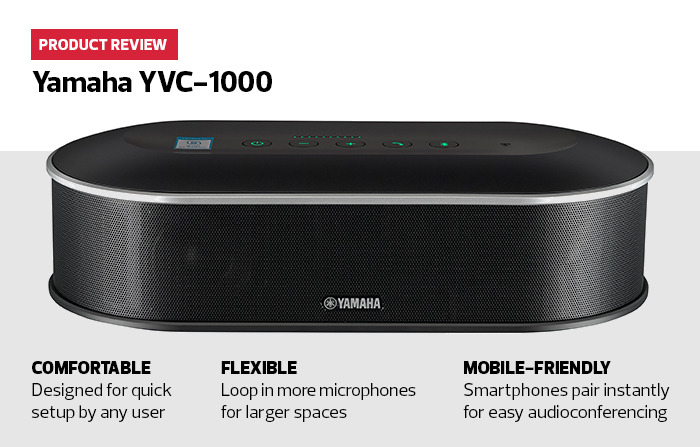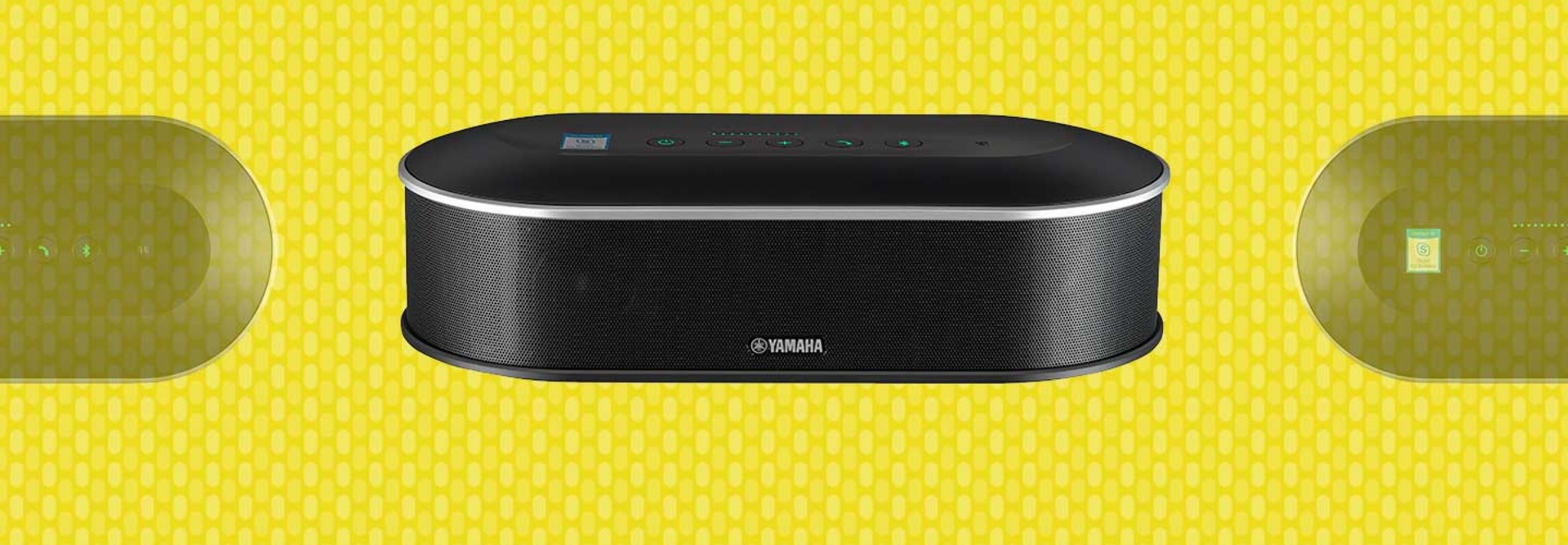Review: Yamaha YVC-1000 Speakerphone Turns Up the Volume on Campus
The Yamaha YVC-1000 speakerphone may be petite, but it offers innovative teleconferencing features normally found only in large, dedicated conference room installations. The crystal-clear communication it supports can transform any classroom into a distance learning environment. Whether acting alone or as a complement to existing systems, the device requires no IT support, which makes it doubly attractive.
SIGN UP: Get more news from the EdTech newsletter in your inbox every two weeks!
Flexible Configuration Supports Multiple Microphones
The four-pound base unit ships with an external, unidirectional microphone that users can place up to 15 feet away, with the option to chain in four additional microphones. This configuration flexibility lets the Yamaha transform both small classrooms and large halls into collaborative environments for multiple participants. In addition to audio support, the YVC-1000 has a computer USB port and RCA jacks to attach to a television, monitor or computer, adding video options to any presentation.
Bluetooth capability supports wireless connectivity to a smartphone or tablet. When I waved an Android smartphone near the base station, it synced up in a few seconds via near-field communication. Thereafter, I could route audio from the smartphone through the YVC-1000, which provided deep and rich sounds. And, once synced, other people could join the call using the YVC’s external microphone.
When used with a computer, the YVC-1000 is designed to work with Skype for Business, which detects the system and immediately integrates it as an audio option. I also tested the unit with a variety of other online videoconferencing tools, and it played well with all of them, with little setup required.
Smart Speaker Optimizes Audio Settings
Adding to the ease of setup, Yamaha has packed a lot of intelligence into the speaker. It constantly samples the environment and automatically optimizes audio settings throughout operation. With a maximum volume of 95 decibels, the unit offers good sound quality, with a nice balance of base and treble that is optimized for voices.
Users can hit a tuning fork button to prompt the device to immediately test its own settings. This takes a few seconds, but does not otherwise interrupt operations.

For such a simple package, the speakerphone offers effective connectivity options. Educators or administrators can tap into professional audioconferencing capabilities with almost no training, making this an easy tool to deploy in multiple campus environments.
Innovative Feature Elevates Human Voices
Despite its simplistic interface, the Yamaha YVC-1000 speakerphone is packed with advanced features often found only in high-end or dedicated conferencing systems. But it goes beyond that with a unique feature: Yamaha’s innovative Human Voice Activity Detection technology, which distinguishes human voices from background noise. That means meeting participants can speak normally, even if they are sitting far away from a microphone or happen to be in a noisy environment.
This makes the device perfect for classrooms or lecture halls that weren’t originally designed for educational practices such as distance learning (now so popular that it’s helping millions of students earn at least part of their degrees remotely). Obviously, for a student remoting in to a lecture, being able to hear the lecturer clearly is critical.
Noisy Test Environment Yields High-Quality Recording
To test the audio quality of the YVC-1000 under less than optimal conditions, I created an imitation of a loud classroom environment with two large cooling fans, a portable AC unit blasting away, a radio just outside the door playing techno music and another speaker at the back of the room playing traffic sounds on a loop.
In addition, I asked participants in the room to sit all along the microphone’s 32-foot range. The test involved people reading from a script (actually, a Tennessee Williams play), while I remotely recorded the proceedings over Skype. People listening in remotely tried to hear what was being said.
The results were impressive. At no point was any speaker’s voice lost on the remote recording. Those sitting farther away sounded almost as clear as those sitting close to the microphone. And while the various background sounds were present, they didn’t interfere with the quality of the humans talking, which the Yamaha YVC-1000 focused on and enhanced as they spoke.
For comparison, I placed a manual tape recorder in the same room near the YVC-1000 microphone. On that device, speakers sitting farther away were very difficult to understand, and the background noise at times drowned people out completely, which is what people in the room said the environment actually sounded like.
In that way, the Yamaha YVC-1000 was able to record clearer voices and better sound quality than actually existed in real life. That’s quite a feat for an inexpensive audioconferencing system, making it a boon for any classroom.
Yamaha YVC-1000
Microphone: 100 to 20,000 Hertz Unidirectional
Sound Pickup Range: 32 feet
Power Consumption: 20 watts
Audio Inputs: 2 RCA Jacks, USB 2.0 Port, Microphone
Dimensions: 13.1x3.74x6.38 inches
Weight: 4 pounds









